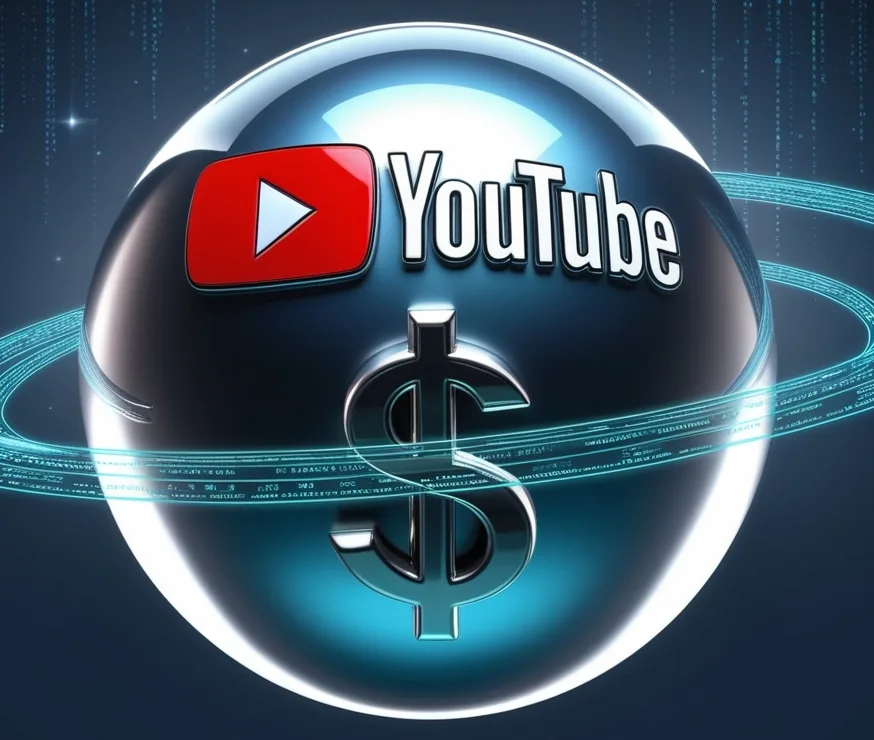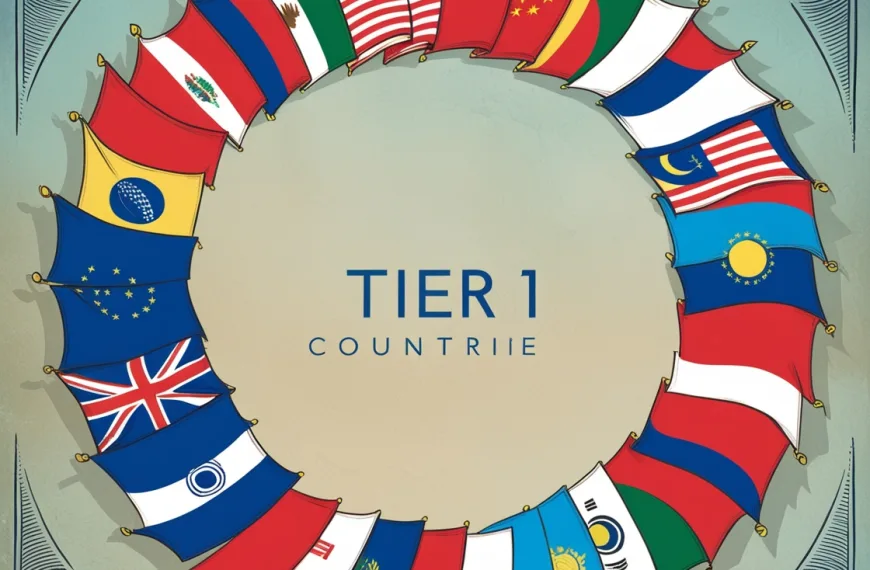Since its humble beginnings in 2005, YouTube has grown into an indispensable pillar of the digital world. What started as a small video-sharing site launched by three former PayPal employees has become a global powerhouse that defines online video content. From music videos and educational tutorials to streaming, gaming, and monetized vlogs, YouTube is now deeply woven into the fabric of everyday digital life. But just how valuable is YouTube in 2025? What are the engines behind its financial success, and what role does it play in the wider ecosystem of its parent company, Google (and Alphabet)? In this article, we take a closer look at YouTube’s net worth, revenue sources, and its growing influence on the digital platform market.
YouTube’s History and Financial Success
YouTube was created in February 2005 and quickly became the go-to site for user-generated video content. Just over a year later, in November 2006, Google acquired YouTube for $1.65 billion in stock – a move that, at the time, raised eyebrows but is now widely seen as one of the smartest moves ever made in the tech world. Since then, YouTube has not only paid for itself many times over but has become one of Alphabet’s most lucrative divisions.
Over the years, YouTube’s financial performance has consistently impressed analysts and shareholders. It went from generating modest revenue in its early years to contributing more than $40 billion annually to Alphabet’s bottom line by the early 2020s. As of 2025, YouTube remains a primary driver of Google’s advertising dominance and has diversified its revenue model to include multiple income streams that stretch far beyond ad dollars.
YouTube’s Net Worth Projections for 2025
Estimating YouTube net worth is challenging, primarily because it is a subsidiary of Alphabet and not a publicly traded entity on its own. However, financial analysts often calculate its value based on revenue multiples and market positioning. As of 2025, several industry reports estimate YouTube’s standalone valuation to be between $300 billion and $400 billion. This estimate factors in YouTube financials, global user base, technological infrastructure, and its dominant position in the online video market.
To put that into perspective, YouTube would rank among the most valuable media and tech companies in the world if it were a standalone entity. Its revenue alone places it ahead of traditional media giants like Disney or Comcast. Moreover, with its growth in user engagement, mobile video consumption, and creator monetization, YouTube is projected to increase in value steadily over the next decade.
YouTube’s Sources of Revenue
Advertising Revenue
The bulk of YouTube earnings still comes from advertising. As of 2025, YouTube ads bring in $8.93 billion in the first quarter, with this number continuing to rise alongside the year. The platform offers a suite of ad formats – skippable and non-skippable video ads, bumper ads, overlay ads, and display banners – all of which are tightly integrated with Google’s powerful ad technology and user data ecosystem.
YouTube’s success in advertising comes from its ability to target users with precision. With billions of views per day and detailed information about viewers’ demographics, interests, and behaviors, YouTube remains a goldmine for advertisers looking for ROI-driven digital campaigns.
YouTube Premium and YouTube Music
Subscription services are an increasingly important part of YouTube’s revenue model. YouTube Premium (with no ads, background play, and offline access) and YouTube Music (their version of Spotify or Apple Music) now have over 125 million people subscribed around the world.
Super Chats, Channel Memberships, and Merch
YouTube has been steadily rolling out more features for creators to monetize their content. Through Super Chats (paid highlighted messages in livestreams), Channel Memberships (monthly recurring payments from fans), and integrated merchandise shelves, creators can earn money directly from their audience. In turn, YouTube takes a share of this revenue.
These features have created a thriving creator economy. Thousands of creators earn full-time incomes from YouTube, and the platform benefits from the diverse, engaging content they produce. Analysts estimate that direct creator monetization features contribute an additional $5–7 billion to YouTube’s annual revenue.
YouTube Shorts and Monetization Expansion
YouTube Shorts, launched to compete with TikTok, has quickly gained momentum. In 2025, people are watching over 70 billion videos a day on the platform. With monetization options now available for Shorts, including ads and fan tipping, this new format is projected to become a key driver of future revenue.
YouTube is also investing in tools for creators, such as AI-assisted editing, captioning, and analytics – many of which come with paid tiers or promotional incentives. These auxiliary services create additional income streams that boost YouTube’s total value.
YouTube’s Impact on Google’s Overall Revenue
YouTube is no longer just a useful addition to Alphabet’s portfolio – it’s a pillar. By some estimates, YouTube may reach for more than 15% of Google’s total annual revenue in 2025. That means it brings in more money than almost everything else Google does – only Google Search makes more.
Its importance extends beyond just dollars. YouTube strengthens the entire Google ecosystem. It drives demand for cloud infrastructure (via Google Cloud), feeds data into Google Ads, increases use of Android and Google Chrome, and anchors Google’s media and hardware strategies. Whether it’s integrated into Google Home, Android TV, or Pixel devices, YouTube helps unify the company’s broader technology offerings.
It’s also important to note that YouTube plays a major role in Alphabet’s long-term growth narrative. As digital advertising matures and regulatory scrutiny increases, platforms like YouTube offer Google a way to diversify revenue while maintaining user engagement and brand loyalty.
Conclusion: Predictions for Future Changes in YouTube’s Value
YouTube’s net worth in 2025 shows just how well it’s stayed relevant and kept up with the times. While competition from TikTok, Instagram, and emerging platforms remains fierce, YouTube’s diversified revenue model, global reach, and deep integration with Google services give it a solid foundation for continued growth.
Looking ahead, YouTube is likely to expand into new domains. Expect more interactive content, expanded e-commerce integration (live shopping is already on the rise), and broader AI-enhanced creator tools. YouTube may also explore more robust creator partnerships, localized content production, and perhaps even original content investments similar to those of Netflix or Amazon Prime.
The rise of short-form content, generative AI, and immersive experiences (like VR and AR) will all shape how YouTube evolves. However, the company’s history of adapting to user trends and technological changes suggests it’s well positioned to lead.
At this point, YouTube isn’t just a place to watch videos – it’s a huge part of the economy, a full-time job for millions, and one of the biggest forces in digital media. Whether you’re an advertiser, investor, creator, or casual viewer, understanding its net worth isn’t just about numbers – it’s about grasping the influence YouTube continues to have on the internet, media, and culture at large.
FAQ
- Why should I care about YouTube’s net worth?
Understanding YouTube’s value isn’t just about numbers– it’s about understanding the influence this platform has on our lives.
YouTube isn’t just for cat videos anymore. It’s where people go to learn, build businesses, follow their passions, and connect with others. Whether you’re a creator, advertiser, investor, or just someone who watches a lot of videos, YouTube’s financial growth is part of a bigger story about how digital media is reshaping everything.
- What is YouTube market value in 2025?
Potentially, it may be $550 billion or even more.
- What’s the connection between Google and Alphabet?
Alphabet is the parent company of Google. Back in 2015, Google decided to restructure so it could better manage all its growing businesses – not just search and YouTube, but also things like self-driving cars (Waymo), health tech, and other “moonshot” projects.
So now, Google and YouTube is a part of Alphabet, and it handles all the core products we know and use every day – like Search, Gmail, Android, and Chrome. Alphabet sits at the top, like the umbrella company, while Google is its biggest and most profitable division. Think of it as Google growing up and getting a parent to help manage the rest of the family.
- If YouTube were its own company, how big would it be?
If YouTube were spun off as its own business, it would be one of the biggest media and tech companies in the world. Its revenue would put it ahead of legacy giants like Disney and Comcast. That’s how dominant and valuable it has become.
- How important is YouTube to Google and Alphabet?
It’s huge. YouTube is now considered one of the pillars of Google’s entire business, second only to Google Search. By 2025, it’s expected to account for around 15% of Google’s total revenue.
But it’s not just about money. YouTube also helps power a bunch of Google’s other stuff – from Android phones to Google Cloud and even their smart home gadgets. It helps tie everything together in the Google ecosystem.
- Where does all YouTube revenue come from?
YouTube makes money in a few big ways:
Advertising – This is still the biggest piece of the pie. YouTube uses Google’s super-targeted ad tools to show viewers persoalized ads.
YouTube Premium & YouTube Music – These are subscription services that give people an ad-free experience and more music features.
Creator Monetization – Think Super Chats during livestreams, paid Channel Memberships, and even merch shelves right under videos.
YouTube Shorts & new tools – YouTube is monetizing short-form content (like TikTok-style Shorts), and also offering tools for creators that often come with paid features.
Put simply, YouTube doesn’t rely on just one thing – it’s built a whole ecosystem of income streams.
- How popular are YouTube Premium and YouTube Music?
Together, these two services now have over 125 million subscribers worldwide. People are clearly willing to pay for a smoother, ad-free YouTube experience – especially if they’re also getting music streaming, offline access, and background play bundled in.
- How do creators make money on YouTube?
YouTube has become a real career path for many people.
Creators can earn through:
- Ad revenue (shared with YouTube).
- Super Chats and Super Stickers – basically fun ways for fans to support creators during live streams.
- Channel Memberships (recurring monthly support from fans).
- Selling merch directly under their videos.
YouTube takes a cut, of course, but this creator economy is booming. Analysts estimate these features bring in around $5–7 billion a year for the platform — and support thousands of full-time creators in return.
- What is YouTube Shorts and how is it making money?
YouTube Shorts is their version of TikTok – super quick, vertical videos under a minute, made for fast scrolling and fun. In 2025, Shorts rack up a mind-blowing 70+ billion daily views.
And yes – they’re making money too. Ads are now running on Shorts, and creators can also get tips directly from fans. Shorts are now a serious part of YouTube’s strategy and income.
- What’s next for YouTube in the future?
YouTube isn’t slowing down anytime soon. The platform is expanding into:
- Interactive and immersive video experiences.
- Live shopping – like TV-shopping but live and way more interactive.
- AI-powered tools for creators.
- Localized and even original content production.
Basically, YouTube is aiming to be more than just a video site. It wants to be a place where content, commerce, tech, and culture come together.
- How do I start creating on YouTube?
Starting on YouTube is easier than you might think. You don’t need fancy gear or a full-blown studio – just a decent camera (your phone works!), an idea you’re excited about, and the courage to hit “record.”
First, create a Google account if you don’t already have one. Just head to YouTube, create your channel (it’s really straightforward), and start uploading. Don’t stress – your first videos can be rough. Everyone starts somewhere. Just be yourself, learn as you go, and keep posting.
Also, explore YouTube Studio – that’s where you’ll find tools to check how your videos are doing, tweak your thumbnails, add descriptions, and connect with your audience. And if you ever feel stuck? There are tons of tutorials on YouTube itself that’ll walk you through every step.
Read more: Tik Tok revenue?








